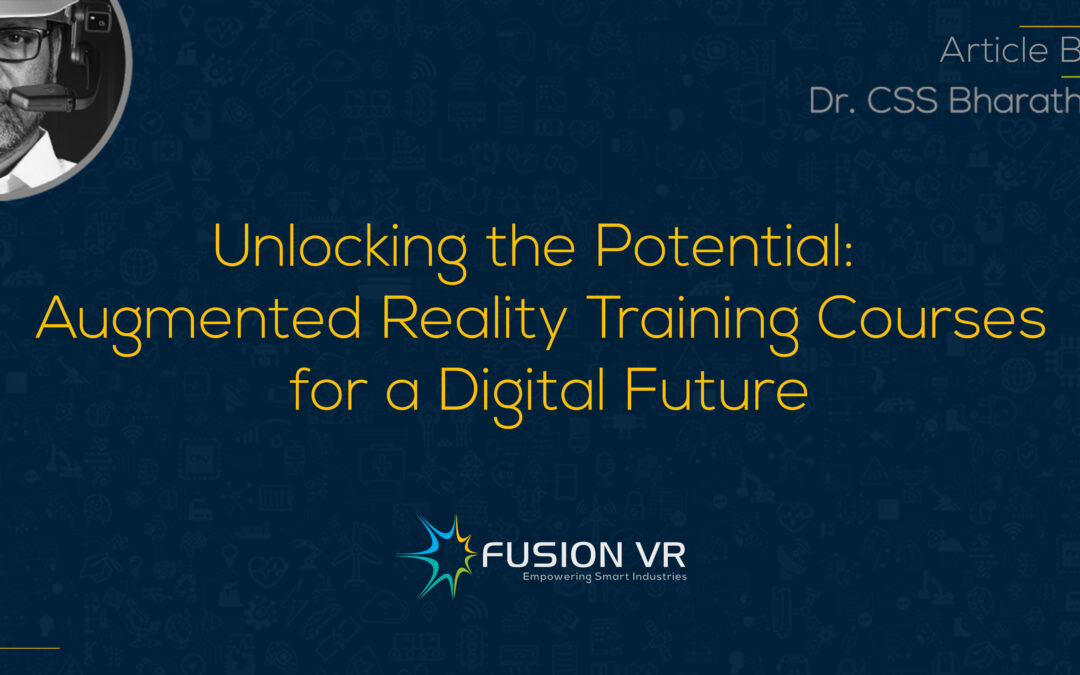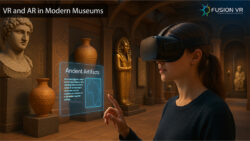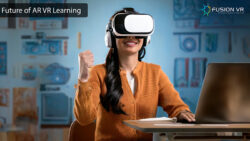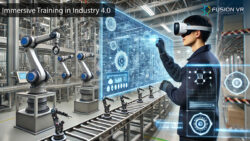The size of the global training industry is estimated at around 150 billion dollars and is estimated to reach nearly 500 billion dollars by the end of the decade. This may not include the in-house training that is provided by corporations and industries across the globe. Training is foundational to the success of all organizations across sectors of the economy. Employees are seen as the most crucial resource and training them is the best investment for a solid future. Well-trained and competent employees establish a competitive advantage for companies in the marketplace.
Training has evolved from the traditional classroom rote learning approach to digital approaches. The availability of technology and the profusion of support organizations has fueled the use of many exciting technologies such as virtual and augmented reality to deliver training that fulfills their learning objectives. Training is seen as vital to employee engagement, a safer workplace without any injuries, a more efficient workforce and reduced downtime. The economic benefits that good training delivers are immense. The training industry is in a churn on how it’s going to transform itself as more digital approaches have taken over
Most companies have resorted to computer-based learning training courses to deliver the content to their employees. The COVID pandemic enabled the growth of online training and learning courses with professional certificates as participating in physical lessons was not an option. While we can satisfy ourselves that online training has been “delivered”, the question about effectiveness is largely unanswered. Effective training may need to be a combination of all traditional and digital approaches. This is the key to unlocking the potential of digital technologies such as augmented reality.
Augmented reality is the overlay of digital content on the reality that surrounds us as we view it through devices such as smartphones, tablets, wearable devices etc. This technology provides relevant contextual content to your device that augments and enhances the quality of your experience in the surrounding reality. Augmented reality can be deployed easily and effectively in today’s digital world. This is why there is huge potential for augmented reality in the field of education and training. The smartphone is now almost everywhere and can be easily transformed from an educational or entertainment tool into an educational tool. The smartphone is not only a powerful processor but can store content or access content from a cloud server through the 5G communication technology now available. This is indeed a time when we have all the technologies at our disposal to make augmented reality training effective.
When it comes to training people effectively, guidance and coaching are very important. Good training often lasts a lifetime, plus the knowledge and skills gained to benefit the individual at each stage of their career. AR training courses are being developed based on several use cases identified. These use cases address the important pain points that trainers and educators face with their cohorts. The main issues that they typically face are engagement, understanding and retention. Augmented reality can help enhance these outcomes quite easily. Let’s look at a few examples of how augmented reality training can make a difference.
The manufacturing industry is one of the key sectors that generate jobs. However, the current education system does not deliver the skills needed for fresh graduates to successfully apply themselves in a new job. They need extensive training on and off the jobs to help them to do their jobs properly. New employees often sit through hours of classroom training to gain theoretical knowledge of their tasks and the equipment that they need to safely operate. However, these instructor led sessions tend to become drab and monotonous which leads to trainees losing interest and consequently their engagement in learning. While classroom sessions are inevitable for compliance and other practical reasons, they can be integrated with augmented reality. Tablets loaded with AR solutions that provide visual, audio and animated content that supplement the trainer’s efforts are designed. These are launched with a QR code and take the trainee directly to the matter being discussed by the trainer. Such solutions require the trainee to demonstrate understanding through gamified exercises and reward them for their success with badges and certificates. The feedback from each of the trainees is delivered to the trainer, who can supplement the training with additional AR-based simulation and coaching.
Augmented reality becomes even more handy with its amazing potential to train new employees on the job. The high effectiveness of AR in classroom training helps them obtain an excellent knowledge base on the theoretical and descriptive stuff that they need to know. When it comes to executing procedures, discipline and attention to detail is paramount. Missing crucial steps or performing them in a different order can lead to serious consequences. The AR solution with excellent interaction design has detailed steps on the job to be conducted. AR wearable helmets provide audio visual instructions through a screen positioned in front of the user’s eyes in a way that does not distract them from the machinery in front. Every step that is performed by the trainee gets recorded and the guidance for the next step is provided beforehand to help the trainee perform it correctly from both the technical and quality aspects. The probability of making errors is greatly minimized. Repetitive guidance on doing it the right way creates the necessary discipline and muscle memory to the trainees. This can be continually used in assembly line operations in many industries for each employee. Ultimately, the goal of such assistance is to provide training and guidance that helps to maintain quality and productivity.
Many industries have complex machinery which require a high degree of skill to operate and maintain them. However, most of these machinery are in operation all the time and the opportunity to see how the machinery is constructed can be obtained only when it’s down for repair and overhaul. Those opportunities are rare and only a few benefit. AR applications can produce a model of the equipment and show in detail a breakdown of its parts and components and how they fit together in the machinery. Trainees view an expertly created 3D model of the machinery that they can disassemble and assemble without the need for the real machine. They can practice this as many times as they want or until they get the desired understanding of how it works. They can simulate problems and witness how the machinery responds to abnormal and adverse operating conditions. All of this can be simulated and presented to the trainer. A decade ago, such possibilities were unheard of and yet, today this is eminently possible.
These are just a few examples to demonstrate the potential of augmented reality training courses. The power of augmented reality can be applied to a wide variety of training scenarios and situations to suit the unique needs of various industries and sectors. I can confidently say that there can be no industry that may never need an AR VR training course. Augmented reality has immense potential to raise human potential and productivity. The expertise needed to develop augmented reality training courses comes from augmented reality developers. The demand for such developers is extremely high. This attests to the growing popularity of augmented reality for training and other industry relevant applications. Fusion VR and ARK Info Solutions have embarked on the Industry Academic Alliance Program to help equip the nation with AR VR engineers and meet the growing demand for such expertise. This program provides AR and VR courses for students and young industry professionals along with AR VR certification. These activities and the demand for effective training solutions will definitely unlock the potential for AR training courses.





